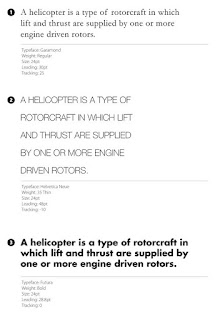- make each poster size (24 inches wide by 18 inches high)
- use Adobe Illustrator's Perspective Grid Tool - note that the Perspective Grid Tool icon will be active in the upper left hand corner of your artboard (see below)
- click on the links below to see tutorials on using the Perspective Grid Tool:
https://helpx.adobe.com/illustrator/using/perspective-grid.html
AND
LINEAR PERSPECTIVE - A TUTORIAL:
Linear
perspective is one of the ways to create the illusion of space on a
two-dimensional surface. Linear perspective is a method using lines to
create the illusion of space on a 2D surface. All forms of linear
perspective involve the horizon line, vanishing point(s), and lines of
perspective that recede or advance to the vanishing point(s).
Each
form of linear perspective is named for the number of vanishing points
used in the drawing. There are three types of linear perspective. One
point perspective uses one vanishing point placed on the horizon line.
Two point perspective uses two points placed on the horizon line. Three
point perspective uses three vanishing points. (see below)
Two
point perspective starts by defining the horizon line. This line
theoretically represents the line that divides the sky from the ground.
However, with many perspective drawings, this line is implied and instead
represents the eye-line or "line of sight" of the viewer. (see below)
Once
the horizon line has been established, the vanishing points are placed.
The vanishing point is defined as a point placed on the horizon line where
objects begin to disappear because of distance. A good way to think of
the vanishing point is by imagining yourself standing on a
beach. Looking both directions, you can see endlessly down the beach. At
some point, people on the beach walking away from you will become
progressively smaller until they completely disappear at the horizon
line.
With
two point perspective, two vanishing points are placed on the horizon
line. These two points should be spaced out from each other to prevent
distortion. Both vanishing points need not both be within the picture
plane, just as long as they are found on the horizon line, which continues on,
leading off of the picture plane in both directions.
The
next step is to draw the corner of the object. Most commonly, two point
perspective is used for drawing buildings or interiors, so this line could be
the corner of a building. This line is drawn in between the two vanishing
points and can cross over the horizon line. (see below)
Receding
lines are next drawn from each end of the corner to each one of the vanishing
points. These lines are called orthogonal lines. Any set of parallel
lines that recede away from the viewer will follow along these lines to one of
the vanishing points. (see below)
Parallel,
vertical lines are drawn to indicate where the building or form ends. The
closer that these lines are placed in space to the vanishing points on either
side, the longer the form appears.
When
a form is placed so that it overlaps the horizon, no additional lines are
needed to define the overall form of the object.
However,
it is important to note that additional lines do exist. These lines are visible
when the subject is placed above the horizon line or below it. (see below)
Orthogonals
extend out from each end of the form and line up with the opposite vanishing
point. The location of intersection that occurs defines the the back corner of
the cube, which is drawn using a vertical line. (see below)
For
forms placed below the horizon line the steps remain the same. However, the top
of the form will be visible. This means that the top portion of the form will
be defined by the orthogonal lines that extend from each end to the opposite
vanishing point. (see below)
Here again, some of the lines are not
visible in the finished drawing (red lines). It is important to note that the
locations of where these lines intersect define the back corner of the cube. (see below)
For
forms placed above the horizon line, the same steps are followed. In this case,
the bottom portion of the form is now visible to the viewer. The bottom portion
is defined by extending lines from each end of the cube to the opposite
vanishing point. (see below)
As
is the case with the other examples, additional lines (red lines) exist but are
not visible in the finished drawing. When complete, all lines that are no
longer needed can be erased revealing the illusion of 3D forms in space. (see below)
Additional
details can be added to a scene to create limitless possibilities. Vertical
lines are drawn to indicate edges and corners, while orthogonal lines are drawn
for parallel edges that recede into space. (see below)










































































